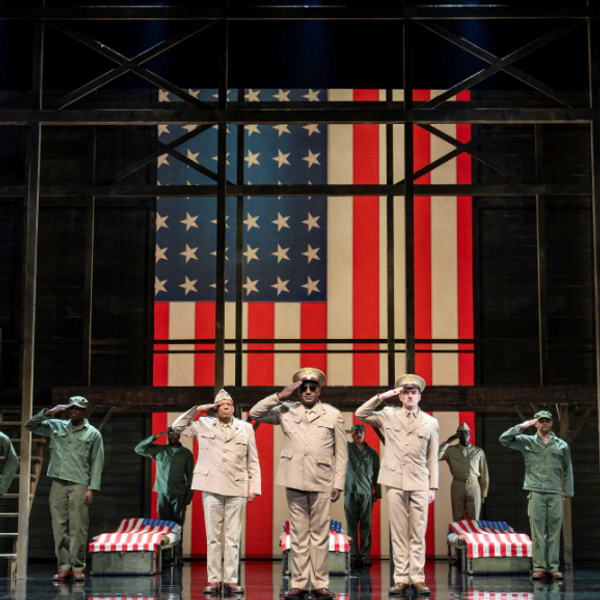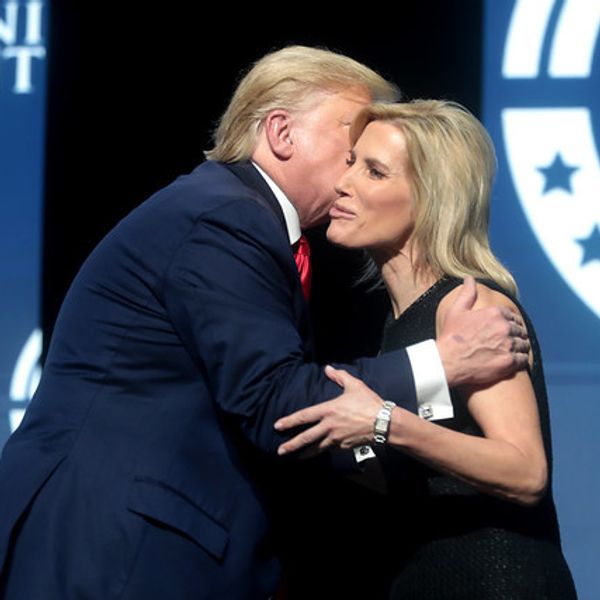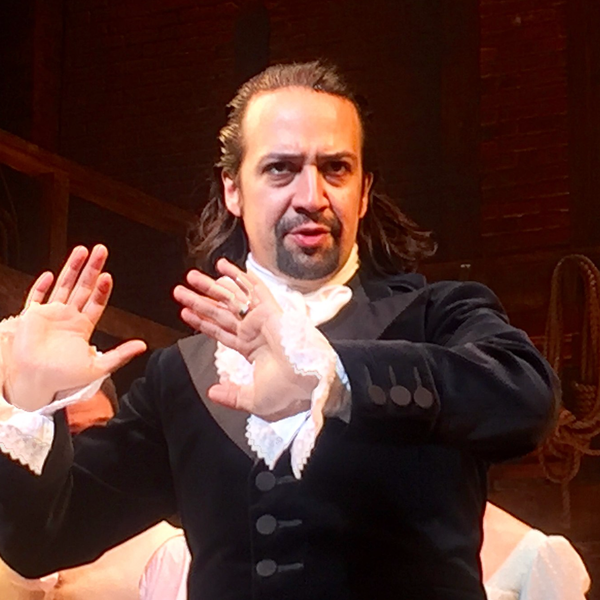"A Soldier's Play" at the Kennedy Center in Washington, D.C.
So much of the American character is in peril, including the cultural touchstones I often reference, probably more often than my column editors would like. But I believe most Americans’ lives are enriched by the TV shows and music, theater and films that make skeptics and even hate-watchers tune in for the Academy Awards or Super Bowl halftime show.
I long ago embraced the fact that the arts (high and low) bring joy, knowledge and — often, just in time — an escape. But to Donald Trump they have become yet another part of American life he can control.
His administration is eviscerating the division that preserves and maintains more than 26,000 art pieces across the country, including renowned paintings and sculptures, owned by the government.
Under Trump’s influence, museums are canceling exhibits that feature diverse artists, films are stripping out characters that represent the underrepresented, and internships and scholarships that expose all communities to the arts are ending.
In just one example, the young musicians who auditioned for and won a coveted learning experience with the U.S. Marine Band were disappointed when an executive order canceled their workshop and “Equity Arc Wind Symphony.” This time, military band veterans stepped up, and the story and tuneful results were seen by the millions who watched and listened on “60 Minutes” on CBS.
However, not every Trump-induced nightmare has a fairy tale ending.
In Washington, the John F. Kennedy Center for the Performing Arts, under the new Trump-appointed management and a board that shockingly elected him chair, intends to narrow the kinds of work it will present in the future, a scary thought even if you adore the Trump-favored musical “Cats.” How many times can a person hear “Memory”?
Isn’t the beauty of culture choice? With diverse offerings available, there is bound to be something that’s appealing to every individual taste.
The president gave away the game when he admitted that in all his years in Washington, he had not been a fan of the Kennedy Center. “I didn’t go,” he said when asked. “There was nothing I wanted to see.”
Nothing piqued the president’s curiosity? Nothing that might inspire, surprise or simply entertain?
Maybe that’s why Trump never laughs, or hardly smiles, unless it’s that weird smirk that spreads across his face when he thinks his sophomoric insults are somehow witty. A hint: Just because sycophants guffaw, it doesn’t mean you’ll be the next recipient of the Mark Twain Prize for American Humor, awarded from that Kennedy Center stage.
Oh, wait a minute.
So, exactly what “woke” shows did the president reject, sight unseen? Perusing the programming when he was in office, I wondered. Was it touring productions of The Book of Mormon or Hello, Dolly! ? Maybe On Your Feet! the story of Cuban American musicians Emilio and Gloria Estefan? Didn’t Cuban Americans turn out for him in Florida?
Considering Trump’s coziness with Vladimir Putin, you’d have thought Shakespeare’s Measure for Measure, performed in conjunction with the English company of Cheek by Jowl and the Pushkin Theatre Moscow, would have caught his eye.
But, no. With all those varied shows on the schedule, as well as the National Symphony Orchestra and the Washington National Opera, the uninterested Trump mostly decided to pass.
In 2017, he did attend a Fourth of July concert at the Kennedy Center hosted by First Baptist Church Dallas, reported NPR. But when the main event is a performance by the choir and orchestra of a song that includes the lyrics “Make America Great Again” and Trump squeezes in a slam on the “fake media,” I’m not sure that counts.
Now, he wants to deny everyone else, dictating what Americans will see and hear, starting but I fear not ending at the Kennedy Center.
The insistence on seeing art and culture through Trumpian eyes means Kennedy Center audiences will miss the MacArthur “genius” and Grammy-winning singer, songwriter and instrumentalist Rhiannon Giddens, who has canceled her show in response.
Having seen Giddens with the Carolina Chocolate Drops delightfully play an eclectic brand of roots music, which elevates the contributions of African Americans, I can say missing a Giddens performance is Trump’s loss.
Giddens has the rare gift of entertaining while teaching you something — in her case, something about America.
I count myself lucky to have had parents who found every free concert, lecture or film at the library. Community programs offering dance and music lessons are disappearing, I fear. Theater and opera tickets didn’t put too much strain on the purse — if you were willing to sit up in the nosebleed section.
My young life included arts and culture, things that I loved and hated and had questions about, that were interesting and fun, that enhanced rather than distracted from the reading, writing and arithmetic many of our leaders would like to solely revert to in public schools.
Though lacking the wealth of the Trump family, my parents realized the importance of a complete education.
I’m certain the president would not have approved of the last show I saw at the Kennedy Center, A Soldier’s Play, Charles Fuller’s Pulitzer Prize-winning drama, set on a segregated Army base in the South during World War II. It’s grounded in the history Trump and his followers are trying to erase.
Yet, a packed audience was thrilled, a difference in opinion on what is and is not proper art that should be allowed in anyone’s America, even Trump’s.
Mary C. Curtis has worked at The New York Times, The Baltimore Sun, The Charlotte Observer, as national correspondent for Politics Daily, and is a senior facilitator with The OpEd Project. She is host of the CQ Roll Call "Equal Time with Mary C. Curtis" podcast. Follow her on X @mcurtisnc3.
Reprinted with permission from Roll Call









